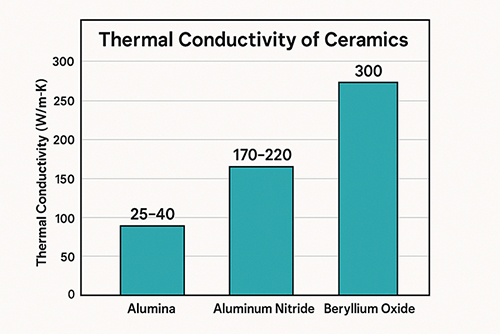What Is the Transparent Ceramic?
Introduction
Transparent ceramics are an emerging class of materials with remarkable properties that have made them increasingly popular in recent years. These materials, made of inorganic crystalline compounds, possess unique physical, chemical, and mechanical characteristics that make them ideal for a variety of applications in fields such as optics, electronics, and biomedicine. In this article, we will delve deeper into what transparent ceramics are, their unique properties, and their applications.

What Are Transparent Ceramics?
Transparent ceramics are inorganic, non-metallic materials that have a crystalline structure and optical transparency in the visible or infrared region of the electromagnetic spectrum. They are typically synthesized from powder precursors using advanced sintering techniques, such as hot pressing, spark plasma sintering, or microwave sintering, which promote densification and crystal growth. Examples of transparent ceramics include alumina, yttria-stabilized zirconia, magnesium aluminate spinel, and sapphire.
Properties of Transparent Ceramics
Transparent ceramics possess a unique set of properties that make them attractive for a range of applications. One of the most notable characteristics is their high transparency to visible and infrared light, which makes them suitable for optical applications such as laser systems, transparent armor, and scintillators. They also have high mechanical strength and hardness, as well as excellent resistance to wear, corrosion, and thermal shock, which makes them suitable for use in high-temperature environments, such as furnace linings and cutting tools. Additionally, transparent ceramics are electrically insulating, biocompatible, and bioactive, which makes them ideal for biomedical applications, such as bone implants and tissue engineering scaffolds.
Transparent Ceramics Used for Optical Windows
Infrared window materials are widely used in aerospace and industrial fields, and can be used to make transparent armor, missile hoods, high-temperature observation windows, and aviation windows. Transparent ceramics used for optical Windows mainly include infrared transparent Y2O3-MgO nanocomposite ceramics, MgAl2O4 transparent ceramics, magnesium oxide (MgO) transparent ceramics, and AlON transparent ceramics.
Related Materials: Transparent Spinel Flat Window, Transparent Spinel Spherical Window
Typical Transparent Ceramic Materials
Infrared Transparent Y2O3-MgO Nanocomposite Ceramics
Yttrium oxide (Y2O3) ceramics have a wide band of UV-visible-infrared transmittance, moderate mechanical properties at high temperatures, and thermal shock resistance, especially the extremely low radiation coefficient at high temperatures. However, the high-temperature sintering in the traditional preparation process will lead to abnormal growth of grains, which will affect its high-temperature mechanical properties and thermal shock resistance, limiting the application of Y2O3 in the infrared window/fairing of high-Mach number missiles. MgO-Y2O3 nanocomposite ceramics have extremely low radiation coefficients and excellent mechanical properties at high temperatures, as well as moderate thermal properties, and are only second to sapphire’s thermal shock resistance.
AlON Transparent Ceramics
AlON Transparent ceramics have excellent optical transmittance in ultraviolet, visible light, and mid-infrared bands. Their bending strength ranges from 380 to 700MPa, and the Vickers hardness is 19.5 GPa. Compared with other transparent ceramics, such as MgAl2O4, magnesium fluoride (MgF2), Y2O3, etc., AlON transparent ceramics have better mechanical properties and can be comparable with sapphire crystals. More importantly, traditional ceramic preparation methods can be used to obtain the large size and complex shape of AlON transparent ceramics, with simple technology and low cost. In addition, it also has good high-temperature resistance, thermal shock resistance, and excellent resistance to rain/gravel erosion performance.
MgO Transparent Ceramics
Magnesium oxide transparent ceramics are an optical isotropic body with good infrared permeability, so they can be used to make high-temperature furnace windows and infrared detector covers. MgO is regarded as a promising material for its good linear light transmittance, low theoretical density, high thermal conductivity, and good vapor chemical stability of alkali-resistant metals.
MgAl2O4 Transparent Ceramics
The optical isotropy of the MgAl2O4 enables the material to be highly transparent. MgAl2O4 transparent ceramics with a high melting point (2135 ℃), good chemical stability, excellent mechanical properties, and optical properties, good thermal shock performance, high rain erosion ability, and can pass through a 0.2 ~ 6 m wide band of light. An infrared fairing material has a multi-band, wide range of transmission.
Conclusion
In conclusion, transparent ceramics are a class of inorganic, non-metallic materials with a crystalline structure and optical transparency in the visible or infrared region of the electromagnetic spectrum. They are synthesized from powder precursors using advanced sintering techniques and possess unique physical, chemical, and mechanical characteristics, such as high transparency to visible and infrared light, high mechanical strength and hardness, excellent resistance to wear, corrosion, and thermal shock, as well as electrically insulating, biocompatible, and bioactive properties. Transparent ceramics have a wide range of applications, including optical windows, laser systems, transparent armor, scintillators, high-temperature furnace windows, cutting tools, bone implants, and tissue engineering scaffolds. Examples of transparent ceramics include alumina, yttria-stabilized zirconia, magnesium aluminate spinel, sapphire, MgAl2O4 transparent ceramics, MgO transparent ceramics, and AlON transparent ceramics.
For more information about ceramic materials, please visit our homepage.
{{item.content}}
LEVE A REPLY
{{item.children[0].content}}
{{item.content}}
LEAVE A REPLY
SUBSCRIBE OUR NEWSLETTER
- Boron Nitride in Cosmetics: Enhancing Performance and Sensory Appeal
- Maximize MOCVD Yield and Purity with Hexagonal Boron Nitride Setters
- What Are the Advantages and Uses of Boron Nitride Ceramic Sheet?
- The Compression Annealing Advantage for Pyrolytic Boron Nitride
- Beyond Insulation: The Surprising Spectrum of Ceramic Thermal Conductivity











